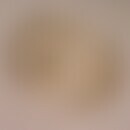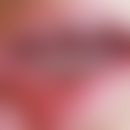Synonym(s)
γ-Hexachlorocyclohexane
DefinitionThis section has been translated automatically.
Antiparasitosum from the group of chlorinated hydrocarbons (gamma-hexachlorocyclohexane).
Cave! Lindane was banned by the WHO for use in humans from 2008! In the FRG also from 2008 forbidden!
Pharmacodynamics (Effect)This section has been translated automatically.
You might also be interested in
IndicationThis section has been translated automatically.
Until 2007 widely used in the treatment of scabies and lice infestation.
Limited indicationThis section has been translated automatically.
Children < 3 years, epilepsy, pregnancy, lactation.
Standard concentrationThis section has been translated automatically.
Gel/emulsion: 0,3%.
Undesirable effectsThis section has been translated automatically.
- Paragroup allergy (Jacutin emulsion), CNS disorders, skin irritation.
- Toxic reactions (e.g. neurotoxicity): After ingestion, inhalation or cutaneous absorption. LD 150 mg/kg bw, MAK value 0.5 mg/m3.
- Acute: headache, dizziness, vomiting, diarrhoea, cramps, respiratory depression, hyperhidrosis, circulatory collapse.
- Chronic: liver damage, carcinogenic in animal experiments.
InteractionsThis section has been translated automatically.
Cosmetics and surfactants increase lindane absorption, avoid combination.
ContraindicationThis section has been translated automatically.
Large area application for infants and small children, application on the eye, long-term therapy, paragroup allergy (Jacutin emulsion).
LiteratureThis section has been translated automatically.
- Bhalla M et al (2004) Reversible neurotoxicity after an overdose of topical lindane in an infant. Pediatric Dermatology 21: 597-599




